For several years, I have used a backwoods washing machine — basically, and literally, a slightly modified 20 litre bucket using a modified toilet plunger as an agitator — up at the cottage to wash clothes, towels, and even bed sheets, for its inherent value of washing clothes of course, but also to reduce the workload upon my return from holidays, as well as to implement a certain DIY ethic, and pass the time (in my eyes, in an amusing way). This is of course in the context of not having an automatic, electric washing machine at the cottage for a variety of reasons, including a lack of space, and the fact that the cottage is not winterized, hence there would issues related to freezing.
Note that while the use of modern conveniences of concentrated laundry detergent, as well as plentiful, clean water (from a pressurized water system) and a garden hose are shown in this post, depending on your circumstances and should you wish to make a backwoods washing machine for yourself, you may wish or need to adjust steps, practices, and so on.
Washing the laundry:
First, since my bed sheets at the cottage needed washing, I stripped my bed and took them outside to the back deck:
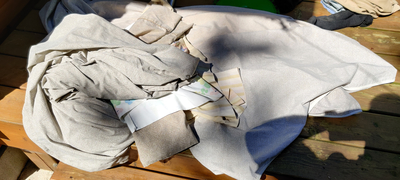
I also took out some other laundry to add to the wash:
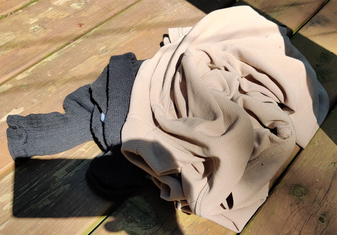
Laundry detergent was taken out (on the right), and previously, one of the laundry packs was diluted in water for easier use and dividing up in smaller laundry loads (on the left).
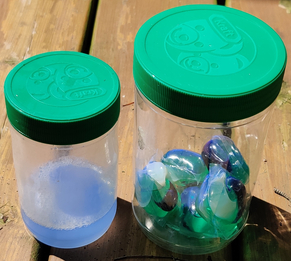
My backwoods washing machine was taken out — a modified 20 litre plastic bucket and a modified toilet plunger:
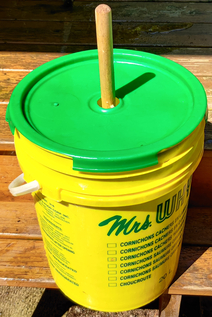
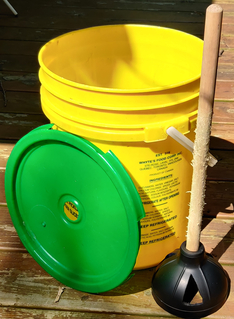
A garden hose was taken out:
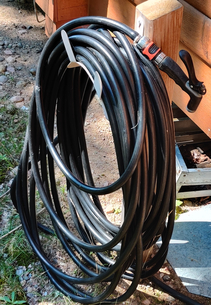
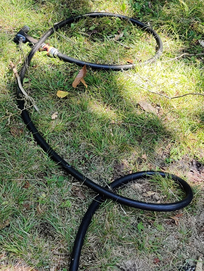
The clothes line was also up and in place for use:
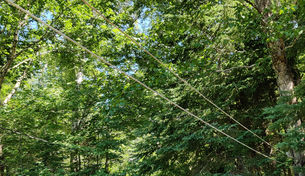
Finally, sufficient clothespins were in place:
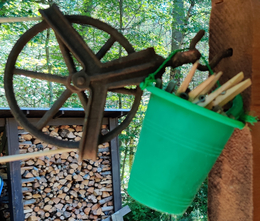
The lid to the backwoods washing machine was taken off the bucket:
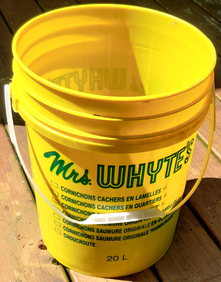
Clothes were added to the backwoods washing machine’s bucket:
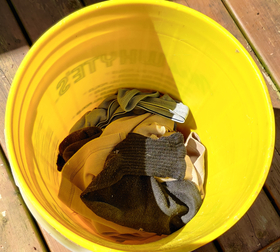
The diluted laundry detergent was taken out and added to the backwoods washing machine:
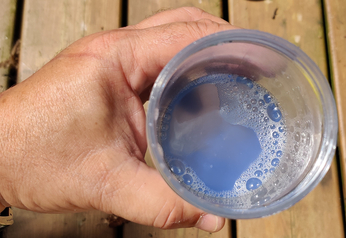
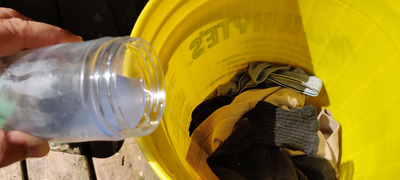
The plunger-agitator was added on top of the clothes in the backwoods washing machine:
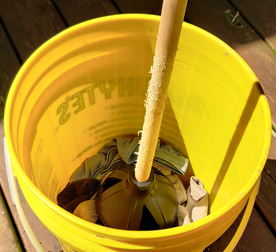
More laundry was placed in the backwoods washing machine:
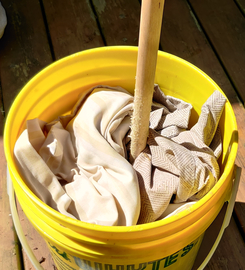
The backwoods washing machine was moved to a more convenient location on the steps of the deck at the cottage:
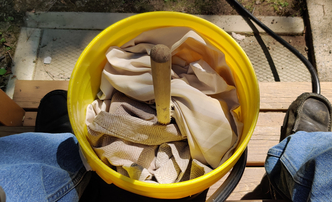
The garden hose was used to fill the backwoods washing machine with water:
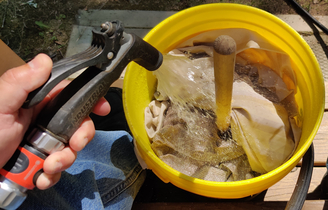
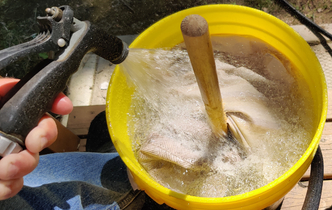
The lid to was picked up and placed on the backwoods washing machine’s bucket:
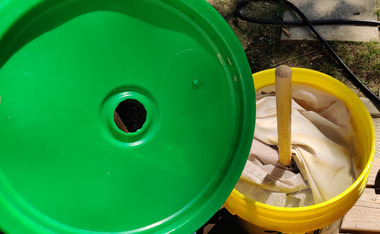
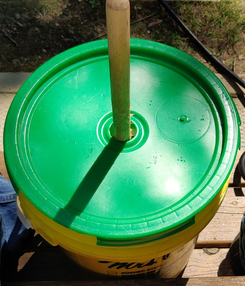
The plunger-agitator was moved up and down like a butter churner:
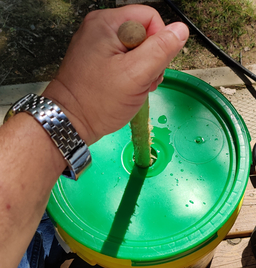
As part of moving the plunger-agitator up and down, the laundry will sometimes get caught a bit:
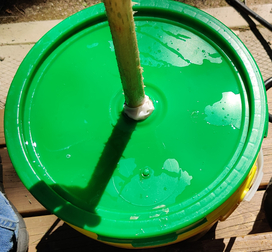
After about five minutes of manual agitation, the lid was taken off the backwoods washing machine:
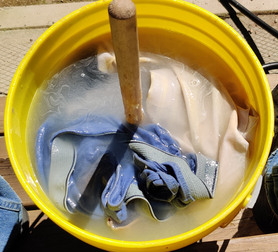
Sometimes, the laundry may become caught up in the holes in the plunger-agitator:
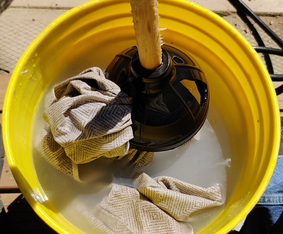
Given the rough-edged hole in the lid of the backwoods washing machine, the wooden handle can become worn and the wood fibres dislodged …
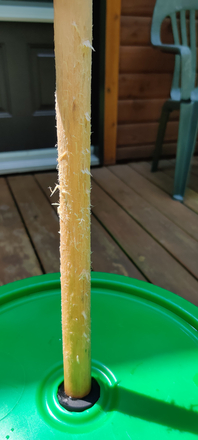
… and which may transfer to some of the laundry:
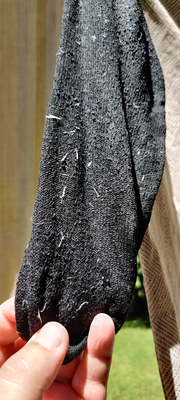
After the washing had been completed for the first load, the individual items were taken out of the backwoods washing machine and hand-wrung, and were put aside for a few moments:
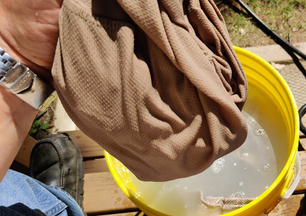
The rest of the dirty bed sheets were placed in the backwoods washing machine, and the agitation action mentioned above was repeated:
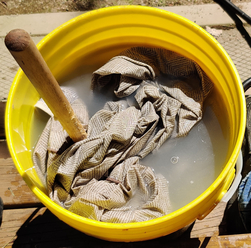
As the water on the steps of the deck and the garden tiles at the foot of the steps shows, the process can be a bit wet:
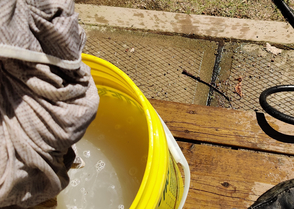
At the end of the manual agitation, the bed sheets were removed from the backwoods washing machine and hand-wrung, and were put aside for a few moments.
At this point, the backwoods washing machine’s bucket of dirty wash water …
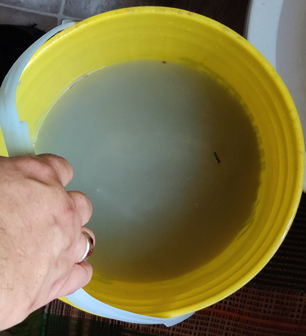
… was brought inside and emptied in the toilet, and the toilet flushed:
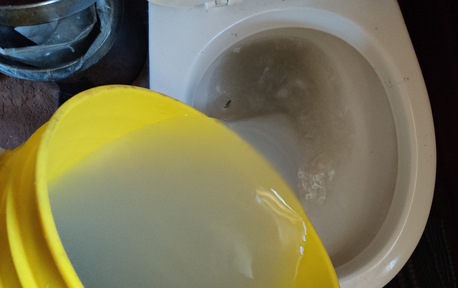
Back outside, the backwoods washing machine’s bucket was rinsed with the garden hose:
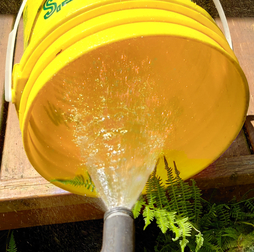
The backwoods washing machine’s lid was rinsed with the garden hose:
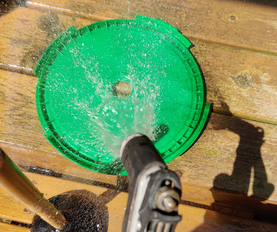
The backwoods washing machine’s plunger-agitator was rinsed with the garden hose:
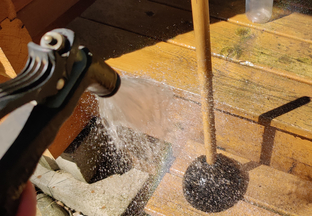
At this point, the backwoods washing machine components were allowed to dry, and the backwoods washing machine was put away until the next use.
The laundry was hung on the clothesline:
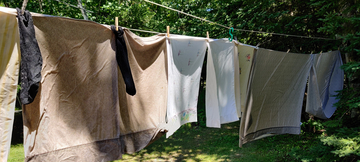
In order to rinse the laundry, the garden hose was used to spray clean water on the laundry hanging on the clothesline:
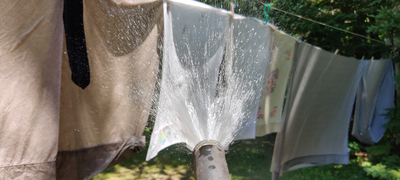
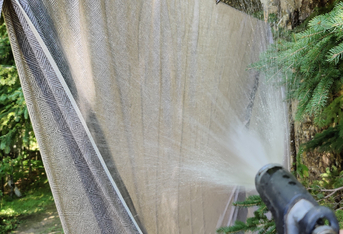
At this point, the laundry on the clothesline is dripping water:
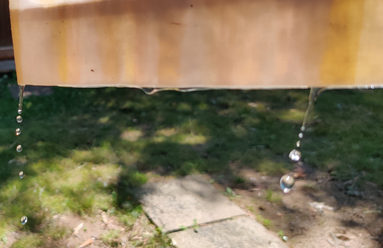

The bottoms of the various pieces of laundry were hand-wrung at their bottoms in order to remove the rinse water:
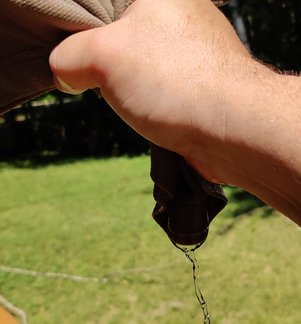
As the laundry dries and become less heavy, they begin to get caught in the breeze:
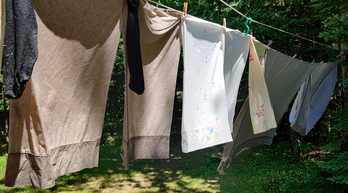
And depending on the amount and strength of the breezes and the winds, the laundry can really get caught in the wind:

As the laundry dried, it was taken off the clothesline …
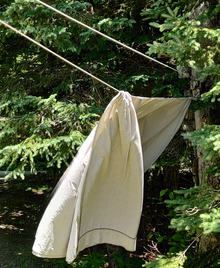
… while the rest of the laundry remained on the clothesline to continue drying out:
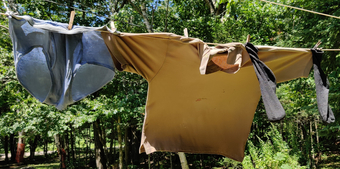
Ah, the wind picked up quite a bit again, making the remaining laundry on the clothesline really get caught up in the wind:
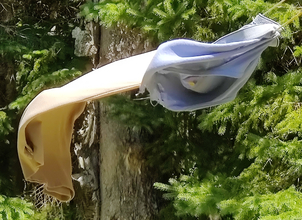
As the dried laundry was taken off the clothesline, it was folded up, ready for their next use:
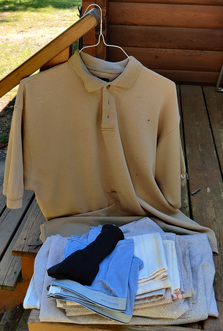
Although the backwoods washing machine has its limits regarding just how much laundry it can wash at once or just how well it deals with ground-in dirt, it is quite effective at washing regular albeit small loads, and is quite useful in situations in which more modern and convenient, automatic washing machines are not conveniently available!
